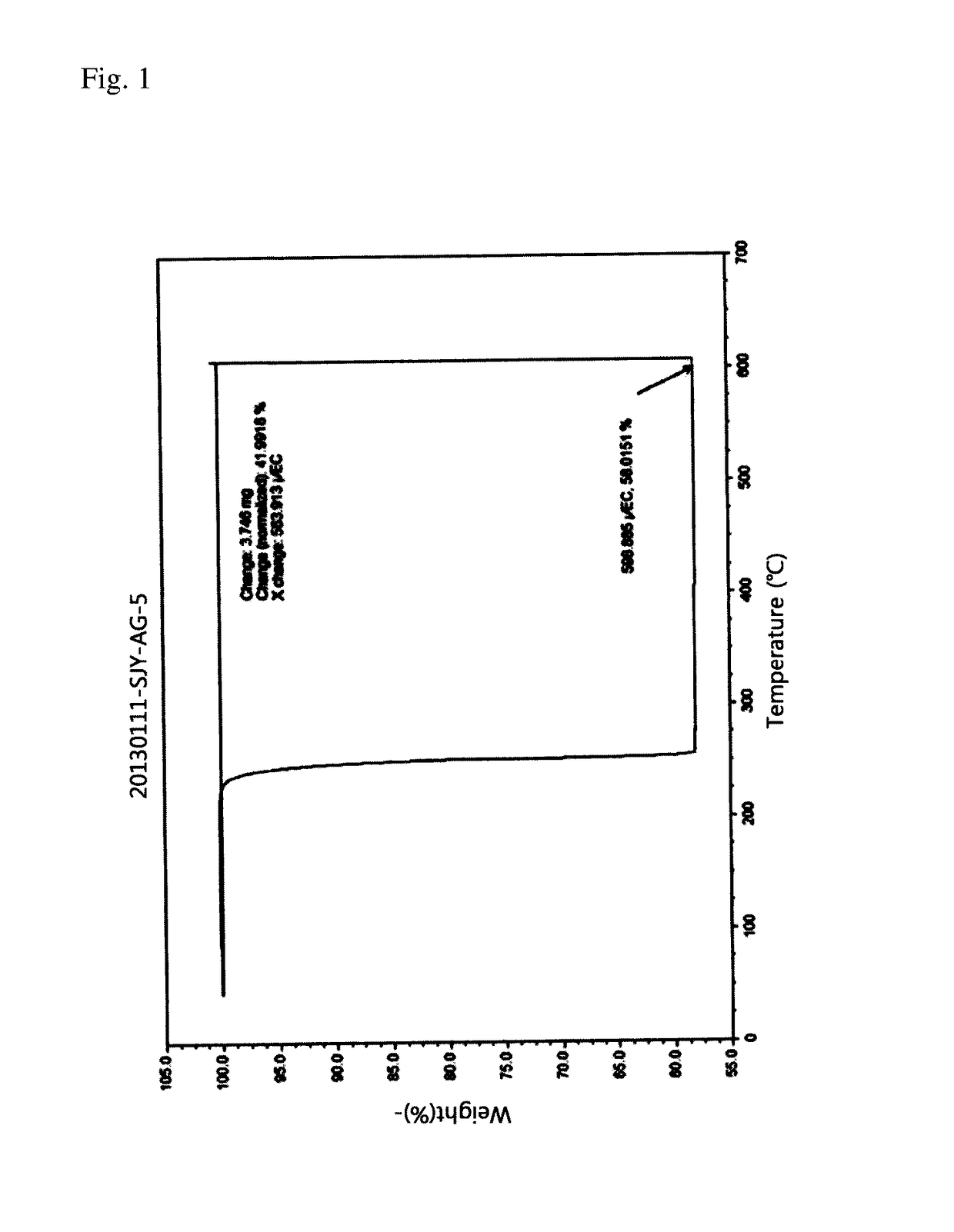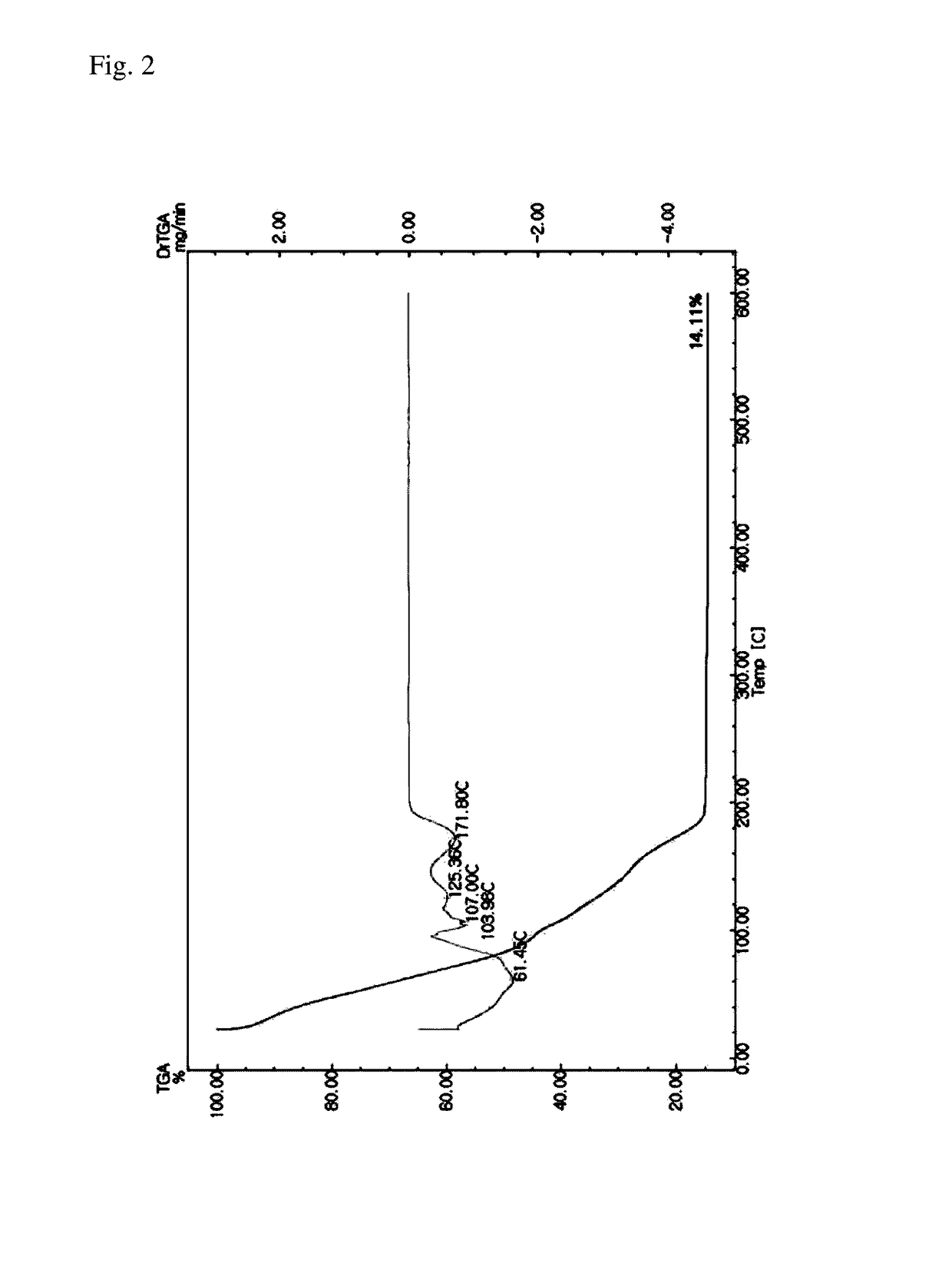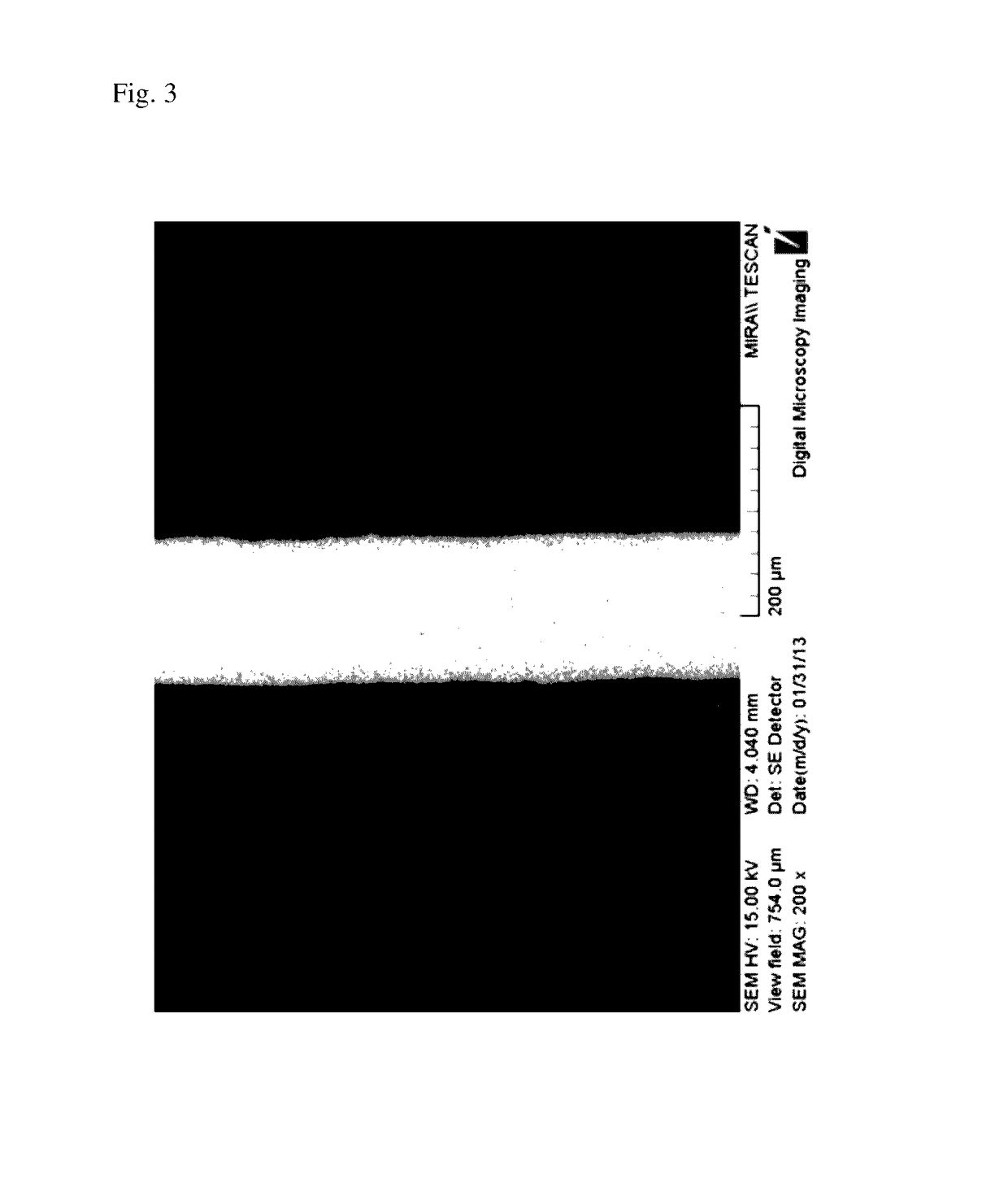Silver ink
a silver ink and silver technology, applied in the field of silver ink, can solve the problems of increased surface tension, nozzle blockage during printing, poor long-term storage stability, etc., and achieve the effects of high silver content, easy production, and high silver conten
- Summary
- Abstract
- Description
- Claims
- Application Information
AI Technical Summary
Benefits of technology
Problems solved by technology
Method used
Image
Examples
example 1
Preparation of Silver Diethylmalonate
[0070]6.89 g (0.043 mol) of diethylmalonic acid was dissolved in 100 ml of methanol and an aqueous solution of 3.60 g (0.09 mol) of sodium hydroxide (NaOH) in 100 ml of water was slowly added thereto with stirring. The mixture was allowed to react with stirring at room temperature for 3 h. The reaction mixture was adjusted to pH 7.0 with a dilute aqueous solution of nitric acid and then a solution of 15.29 g (0.09 mol) of silver nitrate (AgNO3) in 100 ml of water was slowly added dropwise thereto to precipitate a white solid. The precipitate was filtered, sufficiently washed sequentially with water and methanol, and dried in a vacuum oven, affording 15.93 g (yield 99.1%) of the title product as a white solid.
example 2
Preparation of Silver Diallylmalonate
[0071]25.48 g (0.12 mol) of dimethyl diallylmalonate was added to 250 ml of a 10% ethanolic KOH solution. The mixture was allowed to react under reflux for 12 h. After completion of the reaction, the reaction mixture in the form of a slurry was dissolved in 250 ml of distilled water to obtain a transparent solution. A dilute aqueous solution of nitric acid was added to the transparent solution until the pH reached 7.0 and then an aqueous solution of 42.47 g (0.25 mol) of silver nitrate (AgNO3) in 150 mL of water was slowly added dropwise to precipitate a white solid. The precipitate was filtered, sufficiently washed sequentially with water and methanol, and dried in a vacuum oven, affording 45.85 g (yield 96%) of the title product as a white solid.
example 3
Preparation of Silver Methylmalonate
[0072]5.08 g (0.043 mol) of methylmalonic acid was dissolved in 100 ml of methanol and a solution of 3.60 g (0.09 mol) of sodium hydroxide (NaOH) in 100 ml of water was slowly added thereto with stirring. The mixture was allowed to react with stirring at room temperature for 3 h. The reaction mixture was adjusted to pH 7.0 with a dilute aqueous solution of nitric acid and then a solution of 15.29 g (0.09 mol) of silver nitrate (AgNO3) in 100 ml of water was slowly added dropwise thereto to precipitate a white solid. The precipitate was filtered, sufficiently washed sequentially with water and methanol, and dried in a vacuum oven, affording 13.80 g (yield 96.7%) of the title product as a white solid.
PUM
| Property | Measurement | Unit |
|---|---|---|
| temperature | aaaaa | aaaaa |
| pH | aaaaa | aaaaa |
| surface tension | aaaaa | aaaaa |
Abstract
Description
Claims
Application Information
 Login to View More
Login to View More - R&D
- Intellectual Property
- Life Sciences
- Materials
- Tech Scout
- Unparalleled Data Quality
- Higher Quality Content
- 60% Fewer Hallucinations
Browse by: Latest US Patents, China's latest patents, Technical Efficacy Thesaurus, Application Domain, Technology Topic, Popular Technical Reports.
© 2025 PatSnap. All rights reserved.Legal|Privacy policy|Modern Slavery Act Transparency Statement|Sitemap|About US| Contact US: help@patsnap.com



